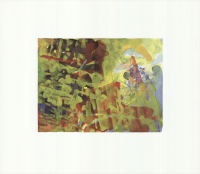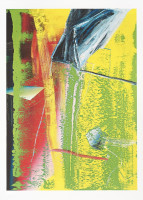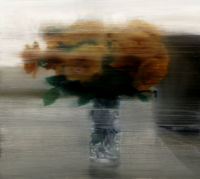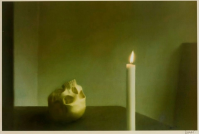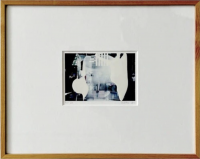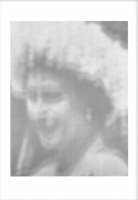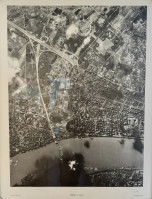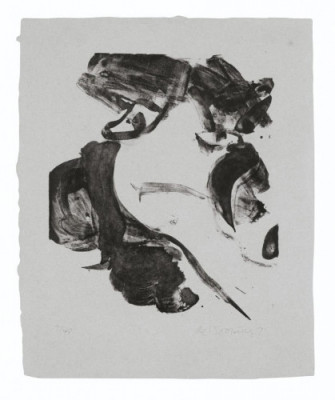
Details
Artist
Styles
Hybrid raster dissolved offset/digital high quality art print on Rives 260 gsm paper. - Not signed // Küchenstuhl by Gerhard Richter is a limited edition offset print, originally created in 1965 and reproduced in 2022. The piece depicts a solitary kitchen chair rendered in a hazy, blurred style, characteristic of Richter’s work. The indistinct, monochromatic tones evoke a sense of memory or fading presence, transforming an everyday object into a meditative subject. The slightly distorted lines of the chair give the impression of movement or transience, hinting at themes of perception and reality, a recurring exploration in Richter’s art. Printed on Rives 260 gsm paper, this high-quality art print creates a minimalist yet emotionally resonant image.
Küchenstuhl, 1965/2022
form
Medium
Size
80 x 60 cm
- Inches
- Centimeters
Edition
Price
- USD
- EUR
- GBP
Details
Artist
Styles
Hybrid raster dissolved offset/digital high quality art print on Rives 260 gsm paper. - Not signed // Küchenstuhl by Gerhard Richter is a limited edition offset print, originally created in 1965 and reproduced in 2022. The piece depicts a solitary kitchen chair rendered in a hazy, blurred style, characteristic of Richter’s work. The indistinct, monochromatic tones evoke a sense of memory or fading presence, transforming an everyday object into a meditative subject. The slightly distorted lines of the chair give the impression of movement or transience, hinting at themes of perception and reality, a recurring exploration in Richter’s art. Printed on Rives 260 gsm paper, this high-quality art print creates a minimalist yet emotionally resonant image.
- Recently Added
- Price (low-high )
- Price (high-low )
- Year (low-high )
- Year (high-low )
Gerhard Richter
Abstraktes Bild, 1982 (Werk 503), 1982/2025
Limited Edition Print
Mixed Media
EUR 1,880
Gerhard Richter
Offset Of Abstract Painting, 1977
Limited Edition Print
Mixed Media
GBP 12,000 - 17,000
Gerhard Richter
Seestück (bewölkt), 1969/2022
Limited Edition Print
Digital Print On Paper
GBP 4,600
What is Gestural?
Gestural art is a term that describes painting with freely sweeping brushstrokes. The primary goal of gestural art is to allow the artist to physically express emotional impulses. The varied, yet expressive paint marks are intended to convey the artist's inner thoughts and emotions, which viewers are believed to understand through the dynamic and spontaneous application of paint.


